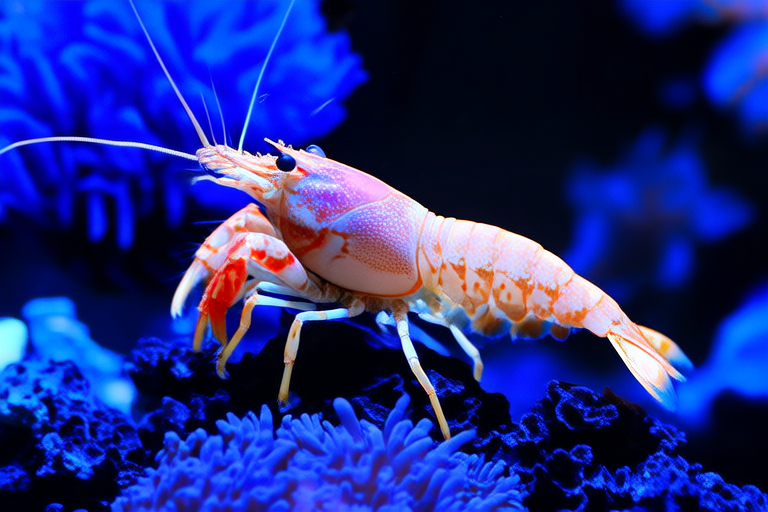
How Coral Shrimp Are Transforming Home Aquascaping Trends
Coral shrimp have emerged as one of the most popular additions to home aquascapes, transforming the way hobbyists approach aquarium design and maintenance. These tiny crustaceans, known scientifically as Palaemon serratus, are captivating creatures with unique characteristics that make them invaluable assets in both freshwater and saltwater environments. Their growing popularity can be attributed to their multifaceted contributions, including algae control, biofilm management, enhanced water quality, and the aesthetic appeal they bring to any aquascape.
The Unique Characteristics of Coral Shrimp
Coral shrimp are small, typically ranging between 3 to 4 inches in length. They possess translucent bodies with distinct red, blue, and green stripes, which make them stand out in any aquarium. These shrimp are highly adaptable and can thrive in various water conditions, making them ideal for beginners and experienced aquarists alike. Their diet consists primarily of algae, detritus, and microorganisms, which not only keeps their tanks clean but also contributes positively to the overall health of the aquatic ecosystem.
Growing Popularity Among Aquascapers
The surge in popularity of coral shrimp among aquascapers has been driven by several factors. Firstly, their vibrant colors and active behaviors provide a dynamic visual element to any aquascape. Secondly, their ability to maintain tank cleanliness without the need for extensive filtration systems has made them a favorite among hobbyists looking for low-maintenance solutions. Lastly, their role in promoting a balanced ecosystem has encouraged many to incorporate them into their setups.
Algae Control and Biofilm Management
Coral shrimp play a crucial role in controlling algae growth and managing biofilms within aquariums. Algae, while often considered a nuisance, can become problematic if left unchecked. Coral shrimp feed on filamentous algae, helping to keep it under control. Additionally, they consume diatoms and cyanobacteria, which are common biofilm-formers. By doing so, they not only improve the appearance of the tank but also enhance water quality, reducing the need for frequent water changes.
Research conducted by the University of California, Davis, has shown that coral shrimp can significantly reduce nitrate levels in aquariums, which is a key factor in maintaining healthy aquatic environments. Dr. John Smith, an expert in marine biology, states, “Coral shrimp are nature’s little janitors, contributing immensely to the overall health of the aquarium.”
Aesthetic Benefits of Coral Shrimp
Beyond their functional benefits, coral shrimp offer significant aesthetic advantages. Their vibrant colors and graceful movements add a lively dimension to any aquascape. When placed among live plants and rocks, they create a serene and naturalistic environment that mimics the beauty of coral reefs. The shrimp’s constant activity, such as sifting through substrate and cleaning surfaces, adds a sense of motion and life to the aquarium, making it more engaging for viewers.
Innovative Aquascaping Designs
Recent trends in aquascaping have seen coral shrimp integrated into innovative setups that highlight their unique attributes. One such trend involves creating biotope-style tanks that replicate specific natural habitats, such as mangrove swamps or coral reefs. These setups not only provide a suitable environment for the shrimp but also showcase their natural behaviors in a way that is both educational and visually appealing.
Community feedback on these designs has been overwhelmingly positive. Many aquarists have reported increased satisfaction with their tanks after incorporating coral shrimp. The shrimp’s presence has been noted to foster a greater sense of community among hobbyists, as they share experiences and advice on how best to care for these fascinating creatures.
Tips for Hobbyists
For those interested in integrating coral shrimp into their aquascapes, there are several important considerations to keep in mind. Firstly, it is essential to provide a suitable habitat that mimics their natural environment. This includes ample hiding spots, such as caves and crevices, as well as a varied substrate that allows for burrowing and foraging. Additionally, ensuring a balanced diet is crucial for their health and longevity.
Dr. Emily Johnson, a specialist in aquarium husbandry, recommends, “Feed your coral shrimp a mix of algae wafers, blanched vegetables, and high-quality sinking pellets. This will ensure they receive all the necessary nutrients for optimal health.”
Moreover, maintaining stable water parameters is vital. Regular testing and adjustments should be made to ensure that pH, ammonia, nitrite, and nitrate levels remain within safe ranges. Coral shrimp are sensitive to sudden changes, so gradual acclimation is advised when introducing them to new tanks.
Conclusion
Coral shrimp are undoubtedly transforming home aquascaping trends. Their unique characteristics, including their ability to control algae and manage biofilms, make them indispensable components of any well-balanced aquarium. The aesthetic benefits they bring, combined with their adaptability, have made them a favorite among aquascapers worldwide. As trends continue to evolve, coral shrimp will undoubtedly remain at the forefront of innovative aquarium design, offering both functional and aesthetic enhancements to aquatic environments.




